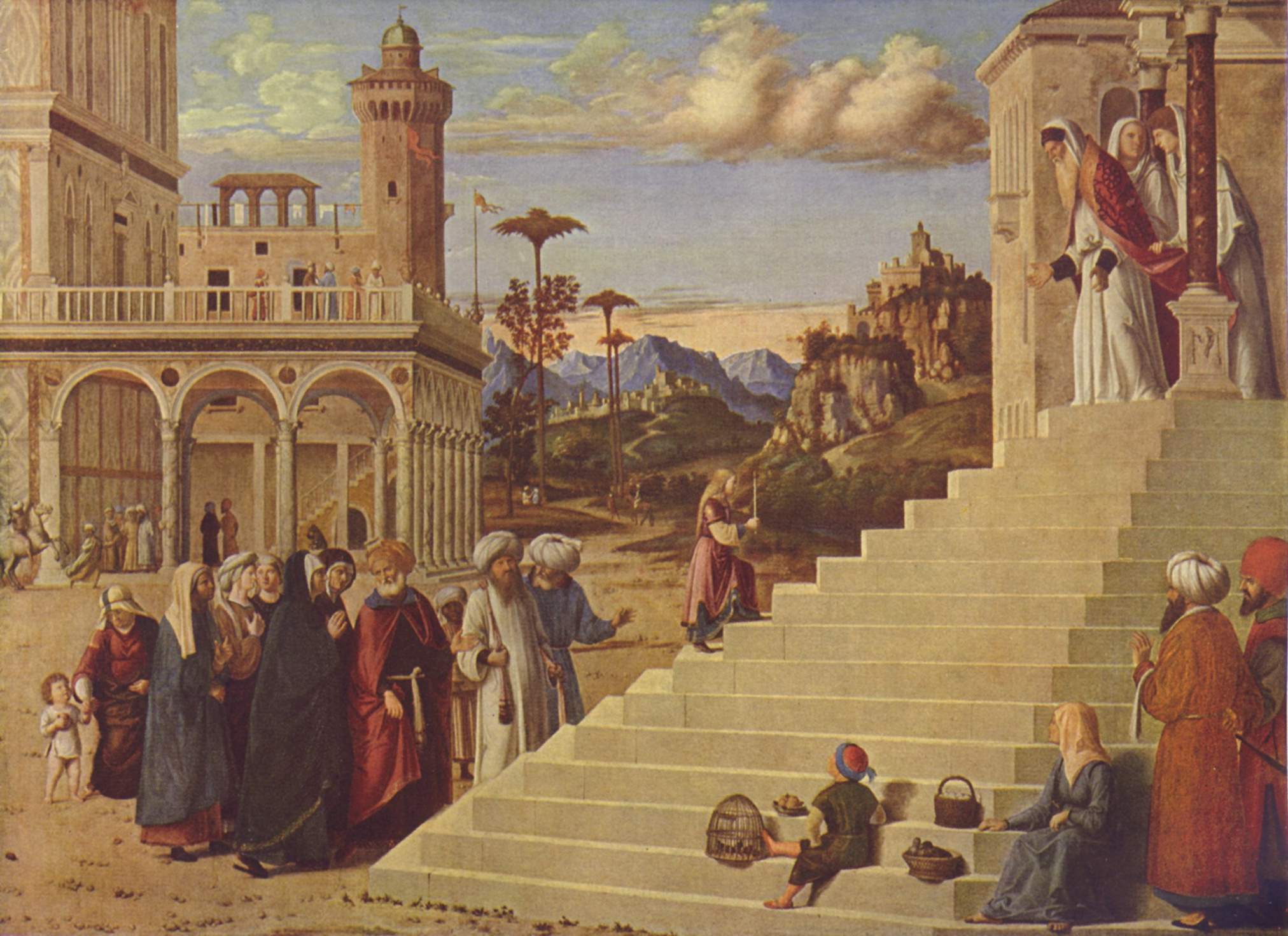Praying the fifteen Gradual Psalms (so called because they mark the steps, as it were, of the pilgrims to the Temple of old; mystically, they signify the active life, the ascent of the soul toward God, and progress in the spiritual life) is an ancient, even a pre-Christian devotion - it is said that Holy Mary prayed them in this manner when she came into the Temple, she who is the model of all Christians and the image of Holy Church.
As it says in Psalm 83:6-8, Beatus vir cujus est auxilium abs te: ascensiones in corde suo disposuit,... ibunt de virtute in virtutem: videbitur Deus deorum in Sion (Blest the man whose help is from Thee: he hath prepared goings-up in his heart... they shall go from strength to strength: the God of gods shall be seen in Sion). All of Psalm 83 might well be read as a commentary on these pilgrim songs, going up to Jerusalem - that is, in this life, into Holy Church, an image and foretaste (being the Mystical Body of Christ) of our final goal, which is after death to enter Heaven.
Only he who is strengthened supernaturally by grace, beyond all human aid, can do so - his heart is prepared and he thereby prepares it to ascend: Sursum corda - Habemus ad Dominum. Ascending the fifteen steps, in faith and deed, now in mystery, in Holy Church united, God shall be perceived: just as one day, face to face, the Beatific Vision shall be seen, by those who by grace persevere unto the end. If even now we abide in faith, hope and charity, God is in our souls, and so the Kingdom of God - Heaven - is within (as Bl Elizabeth of the Trinity notes).

(Our Lady advancing by steps, signifying her utter dedication to God, inspired by the Holy Ghost, Who filled her with grace ever since her Immaculate Conception.)
By the early Middle Ages, these Gradual Psalms came to be recited in choir before Matins; St Pius V removed the obligation to do so out of choir, and St Pius X removed the remaining choral obligation (which was to say them on Wednesdays in Lent, except in Holy Week or on feasts of nine lessons). However, to pray them is of course laudable, and Pius V himself, in 1568, granted an indulgence to their use (originally equivalent to fifty days' canonical penance on the days prescribed in the Breviary for their use in choir, and forty days' otherwise, but increased to seven years' in 1932) - even to-day they are still explicitly indulgenced prayers. According to the Breviary, they are divided into three groups of five psalms, each group followed by a Pater, versicles and Collect.
In the Little Office, though the Dominican form includes them all, the Roman doesn't use the last three (Pss 131-133). To have the benefit of reading over the last three in particular, and of all fifteen together, I prayed them to-night, as Friday penance - but why not read them devoutly for whatever cause? (Navigate through the Officium Divinum site - they appear under Preces.)








3 comments:
Hi, friend!!
I like a lot your blog, I have just known it looking for information about the Canticum Graduum.
Please, can you tell me what are the paintings that appear on the article and ho is his auctor?
If you want, you cant write me the respond to my e-mail: juanpablovalero@hotmail.com
Thnaks you very much!
May I have permission to show your picture of the Gradual Psalms with what appears like Mary ascending the 15 steps to the temple and the Priest standing at the top. I've made a video of "How to pray the Liturgy of the Hours" and in daytime prayer they pray the Gradual Psalms. I just wanted to show a young Mary ascending the steps to the Temple as the Gradual psalms are used in the Daytime prayer.
Please allow me your permission for this.
Thank you very much,
Joanne
Sunday, November 3rd, 2019
Both images are from Wikimedia Commons - don't copy them from here, instead, go there and you can freely obtain them where I did. You will have to do the searching yourself.
Post a Comment